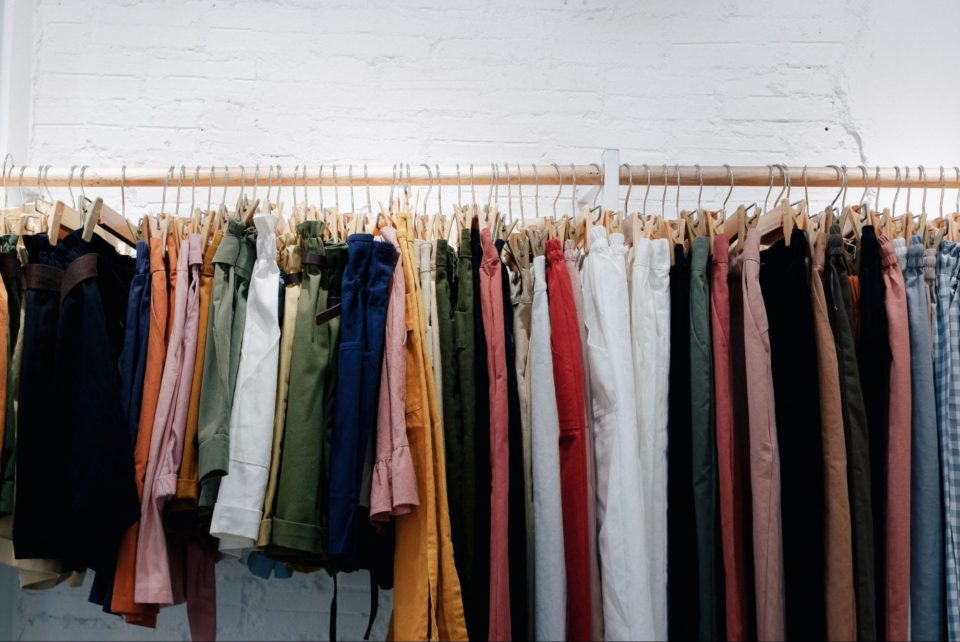Visualising the future – how Marxent is changing the way we buy with 3D
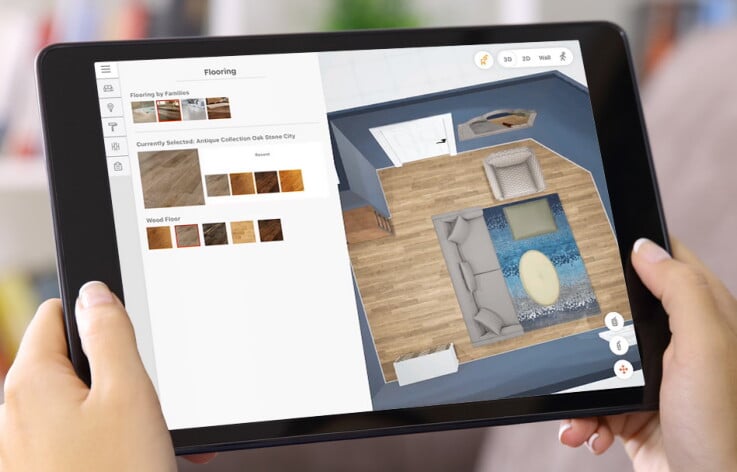
Augmented reality, virtual reality, 3D might all be things that have been battered about for a while, but they keep our attention because of the sheer possibilities they enable. Let’s face it – these are amazing tools for helping buy furniture, white goods, kitchens, bathrooms, artwork…
One of the keepers of these tools is Marxent which makes omnichannel interesting by way of its 3D platform that lets retailers get stuck in with 3D, AR, VR and more for design and visualisation. UK director Leigh Davidson talks us through where 3D is already changing the way we buy, and why it’s going to become a necessity, not a choice, soon.
Can you tell us what Marxent does in a nutshell?
Marxent is the leading omnichannel 3D design and visualisation platform for home goods retailers and manufacturers. Using our 3D Cloud platform, retailers can repurpose 3D assets to offer shoppers experiences in the store, at home or on the go. These experiences are delivered in virtual reality (VR), augmented reality (AR), 3D Room Designer and 360 Spins, to help shoppers plan, visualise and buy with confidence and speed.
What sorts of retailers are you working with? Are there any particular types of retailers or retail sectors that you think your technology is most suited to?
Our clients include furniture and kitchen giants such as Macy’s, American Woodmark and Office Depot.
We focus on retailers who have shoppers that are lost at home or overwhelmed in the store trying to plan and visualise purchases of furniture and homeware. This buying journey is an emotional one and can quickly turn sour …will that table top clash with the new flooring and allow enough space to get by? Will that lamp shade go with the newly painted walls? Forget this, I’ll think about this again after the summer! I don’t want to argue, let’s just keep what we have for now!
Humans are visual creatures but trying to visually build and compare different options in our head is not easy and sometimes impossible for certain individuals. It’s no wonder that so many shoppers still want to go to the store and see products in a showroom. Hat’s off to the individuals who buy fast and with little stress. A round of applause to those who don’t have any post purchase concerns …Should we have bought 3 bar stools instead of 2, argh we’ll have to pay for another delivery charge? …Is that corner sofa even going to fit, argh the delivery fee is nonrefundable?
This is where our magic works best. Any furniture or home purchase can be planned, visualised and bought with the help of our experiences. The interesting thing is that all of our retailers have invested in a 3D strategy but not necessarily started in same place.
Some have started with a 3D Room Planner and progressed to 3D Product Spins, whereas others have gone from AR, to 3D Room Planner + VR. There’s no set path, just the reassurance that the retailers know any investment in content and the 3D Cloud can be reused through different experiences.
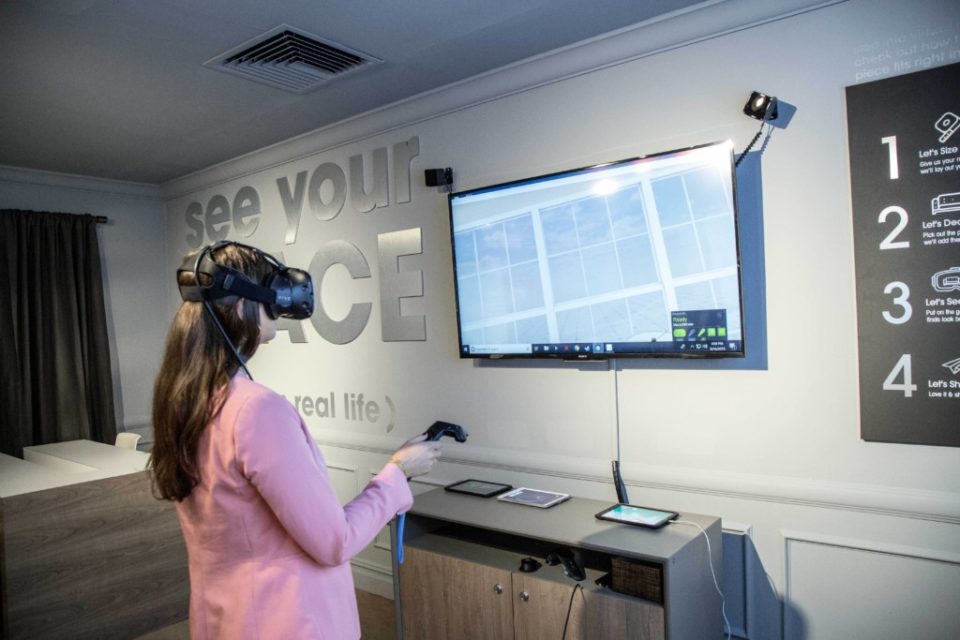
Images courtesy of Marxent
Are there any specific projects that you’ve recently worked on that are particularly interesting?
We’re currently working with a British furniture and home accessories company who offer an interior design service to the clients. This is particularly exciting because the 3D planner will transform the way the retailer collaborates with their clients to co-create their dream designs. By the end of the year, we’ll see the 3D Cloud live across the country in selected stores.
Can you share any results or ROI your technology has achieved for clients or in tests?
ROI on our 3D Cloud platform isn’t just a marketing play and is definitely not a gimmick. We’re significantly shortening sales cycles, increasing basket spend and have seen a staggering reduction in returns across all of our clients with typical stats of 50% increase in average transaction size, 30% increase in items per transaction and 80% reduction in product returns.
This year Macy’s selected our 3D Cloud platform, rolling out AR features in their app for shoppers at home and a nationwide deployment of VR in store. CEO Jeff Gennette said that “This significantly increases transaction size, and reduces returns. And importantly, it allows us to put big ticket in roughly half the amount of space.”
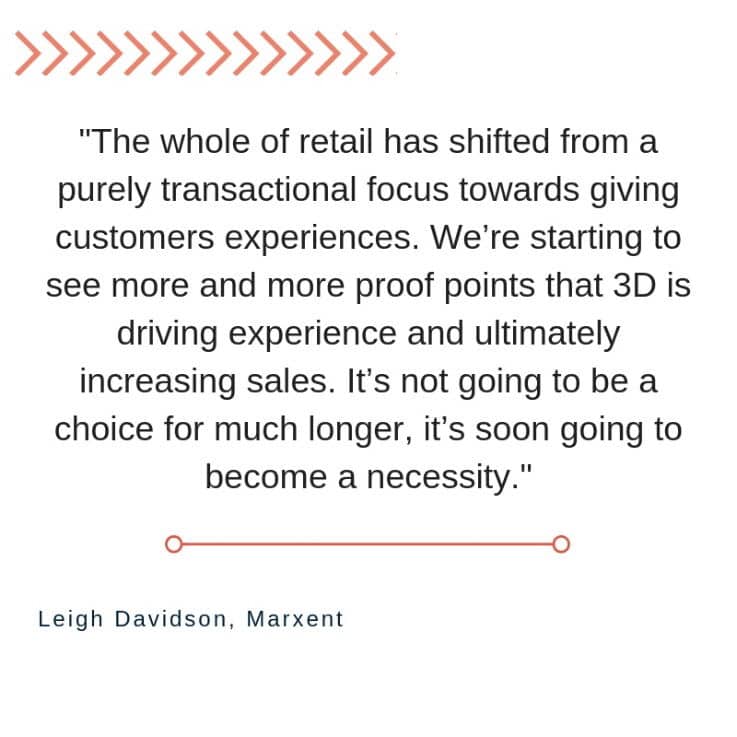
Is there anywhere you think 3D isn’t at all applicable in retail?
The real world is three dimensional, so the use of 3D is, and will be, used more and more in many different use cases for retail. But of course, there are sweet spots today where the gain is bigger. Considered purchases of products with a visualisation contemplation is the winning ticket for 3D technology today.
Then it’s about selecting the right experience that fits the challenge you’re trying to solve. If shoppers are struggling to understand how to completely design their kitchen, then the 3D Room Designer is the way forward. If, however, shoppers just want to see one or two items within an already furnished room, then AR is probably spot on.
What are some of the most creative applications you can envisage for your technologies?
The latest version of our 3D Room Designer is an incredible leap forward as we’re enabling shoppers to design an entire room, in 3D, in minutes verses months! With this we’re already seeing retailers providing configurable products within the 3D Room Designer… what’s stopping shoppers one day designing bespoke furniture for their own room?
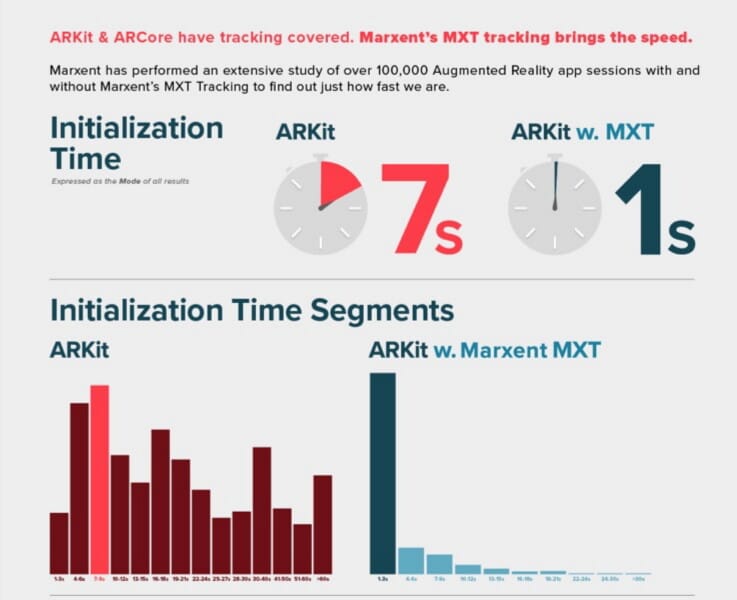
Images courtesy of Marxent
What have you learnt about what makes an effective 3D retail experience?
There has to be enough 3D content that looks great and runs quick. Years of experience and development has gone into our 3D Cloud platform to provide fast real-time realism of our 3D assets that are reusable across different experiences and scalable for any enterprise, anywhere.
We soon realised that with our AR retail experience we needed to offer our clients an enhanced speed on initialisation. It’s well documented that if you’re slow you’re going to struggle. 75% of consumers move to competitors’ sites if your site is slow and that is no difference in our vertical with 87% of the UK’s top retailers risking revenue loss through poor mobile experience.
Do you think users of an AR retail experience are happy with seven seconds wait for an ARkit app upon initialisation? It’s a pretty damn good experience but it needs to be quicker, especially at the start. We’ve managed to reduce this to one second with our MXT tracking on top of ARkit. That’s huge.
Do you think the retail industry is doing enough to embrace 3D?
Only two years ago I was trying to educate retailers on the difference between AR and VR. Now there are leaders seriously starting to invest. The ones that are embracing 3D the most are the ones that are thinking a little more ahead and investing for the future vs a one-off project.
For example, instead of thinking, right AR is hot, we want to do an AR project, they’re thinking about the 3D assets – how do we create a 3D library that scales, looks incredible and can be used not only in AR, but also with VR, 3D room planner and perhaps even online?
Shoppers are expecting retail websites and stores to be more interactive and engaging. Although there’s a lot of focus on ecommerce, I think it’s more interesting to see how we’re driving in store traffic, with enhanced sales performance.
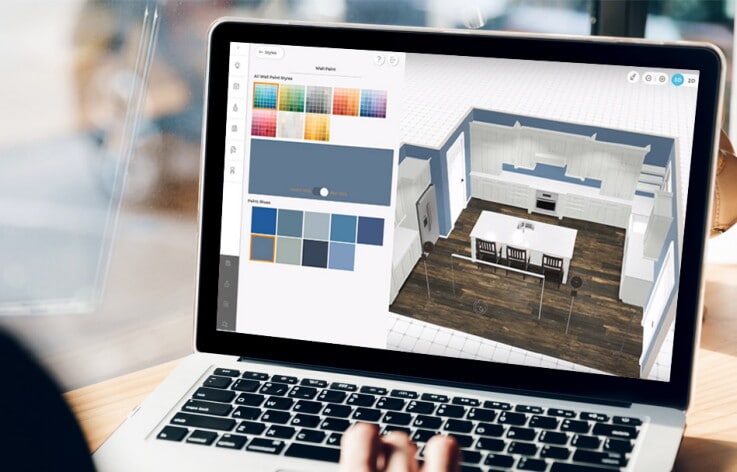
Images courtesy of Marxent
How important is it for companies to be thinking about 3D technology in their strategies?
The whole of retail has shifted from a purely transactional focus towards giving customers experiences. We’re starting to see more and more proof points that 3D is driving experience and ultimately increasing sales. It’s not going to be a choice for much longer, it’s soon going to become a necessity.
What are the biggest barriers to wider adoption of 3D in retail?
Again, content is king. The production, quality and the ability to reuse 3D assets are all very important, otherwise things just don’t add up. Retailers need to stay close to the challenges they’re trying to solve – doing 3D for the sake of it is not going to work.
What does the future look like?
From a personal point of view, I believe hardware developments will open up many more opportunities and dreams for retail (particularly with AR).
We know that we’re going to see the cameras on our phones improve with depth capabilities meaning they can understand more about the real world around us. Imagine capturing the floorplan of your room from your phone or linking AR with AI to have your phone analyse your current furnishings and suggest changes based on light in the room, the current floor and contrast with wall colours!
Apple, arguably THE smartphone company, says AR is going to be as big as the smartphone. Which is why every dick and harry is “secretly” investing in the development of AR hardware. Even major companies without a phone to sell are getting involved, such as Facebook and Snap, knowing full well that we’ll soon be living our lives through smart glasses, ultimately replacing the mobile phone.
The opportunities across retail will be incredible!
What’s the next phase of tech like AR and VR? We’ve got you covered. Find out more about the latest trends in retail by taking part in one of our Insider Trends retail safaris.



